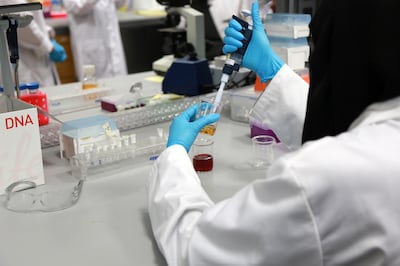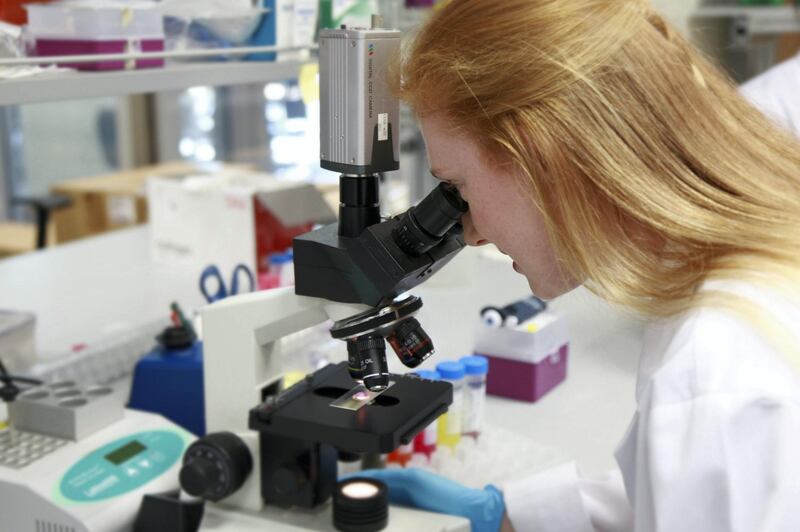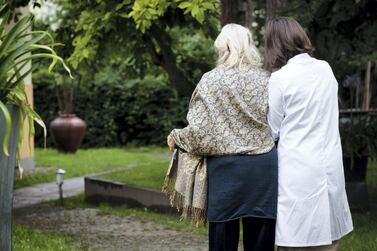As one virus holds the world in lockdown, a second has moved centre-stage in the fight against another global scourge.
Startling new evidence has emerged of a link between Alzheimer’s Disease and the common herpes virus.
But this time the involvement of a virus is a reason for hope, as it raises the possibility of a vaccine or antiviral for a disease that has so far defied all efforts to find a cure.
It also marks a radical change in attitude among scientists towards an idea - first reported in The National - that has been dismissed for decades.
Named after a German psychiatrist who identified it in 1901, Alzheimer’s Disease is notorious for causing memory loss, behavioural changes and death.
Primarily a disease of the over-60s, its prevalence has soared in recent years, propelled by increasing longevity.
Currently afflicting more than 50 million worldwide, cases are set to top 130 million within 30 years.
Yet despite billions spent globally on research, there is still no effective treatment. According to some estimates, more than 100,000 research papers and 400 therapies have so far failed to cure or even slow the onset of Alzheimer’s.
New hope has now emerged following a flurry of studies suggesting that a discovery made 30 years ago holds the key to defeating this much-feared disease.
In 1991, a small team of researchers in the UK reported finding herpes simplex virus - HSV1 - in the brains of patients with Alzheimer’s disease.
The researchers pointed out that some common pathogens, including the measles virus, were already known to lurk in the body for years and then suddenly flare up causing severe neurological disease. Perhaps, they suggested, HSV1 might do the same, triggering Alzheimer’s in later life.
The discovery failed to spark any interest, not least because many researchers believed the cause of Alzheimer’s was already known: the build-up of a sticky protein in the brain called amyloid-beta.
Studies had identified genes that seemed to increase the risk of this protein creating so-called plaques and tangles in brain cells, which then malfunction and die.
During the early 1990s, researchers discovered a gene code-named APOE-epsilon4 that boosted the risk of developing Alzheimer’s up to 10-fold. The gene seemed to affect the ability of brain cells to clear away the amyloid-beta.
Having identified the gene and its effects, researchers believed the road to a cure was clear: find a way of removing the amyloid plaques.
And until very recently, that has been the focus of the global research effort. From small biotech firms to giant pharma companies, an army of researchers have developed a host of different drugs to treat Alzheimer’s.

Many proved effective in mice genetically engineered to develop the disease: as the drugs cleared the amyloid plaques, the mice recovered. Yet time and again, the drugs proved useless in humans.
Meanwhile, evidence of a link to the herpes virus continued to grow. The UK team, led by Professor Ruth Itzhaki of the University of Manchester, found that being infected with the virus alone isn't enough to trigger Alzheimer's - and neither is having the APOE-epsilon4 gene. But the combination increased the risk 17-fold.
Other researchers found similar results, yet the focus of global research remained unchanged: attacking the amyloid plaque.
This was despite studies finding high levels of amyloid in the brains in perfectly healthy people - and the continuing failure of drug therapies.
The turning-point came in March last year when US biotech company Biogen halted trials following disappointing results from yet another anti-amyloid drug.
Critics of the whole “amyloid hypothesis” became more vocal, arguing that the plaques might be merely a symptom of Alzheimer’s, not a cause.
By then many studies were supporting the virus link, not only with HSV1 but several other forms of herpes virus and other pathogens.
Now the leviathan of Alzheimer’s research has finally begun to change direction. Instead of focusing solely on plaques, the virus has become the target. At the same time, major funding has started to flow from, among others, the US National Institutes of Health.

That research is leading to some startling findings. The influential journal Science Advances has just reported the first observations of HSV1 triggering the classic signs of Alzheimer's disease.
It’s been made possible by researchers in the US creating a network of a million human brain cells and then exposing them to HSV1.
Astonishingly, the network started to become choked with plaque-like material. The individual brain cells also showed signs of inflammation, and then started to malfunction in ways similar to Alzheimer’s disease.
But the researchers did not stop there: they also treated the cells with Valacyclovir (VCV), an anti-viral agent widely used to combat HSV1. Again, the results were remarkable: the level of infection decreased – along with the amount of plaque-like matter jamming up the cells and malfunctioning.
"These were profound changes", senior author Professor David Kaplan of Tufts University, Massachusetts told the medical website Stat. "And all these responses - the physiological changes and the functional degradation - are important for the disease".
The virus theory is also behind clinical trials of the effectiveness of VCV in patients with mild Alzheimer's disease now underway in the US, and due to report in August next year.
Some evidence already exists that antivirals may succeed where countless other drugs have failed. A study of thousands of health insurance records published by researchers in Taiwan revealed that infection with HSV was linked to a 2.6-times greater risk of Alzheimer's. Those treated for the infection, in contrast, benefited from a 10-fold reduction in risk.
So is the quest for a cure for Alzheimer's finally on track? "Over the past year, we have witnessed a striking volte-face in the attitude of many people", Prof Itzhaki told Nature Reviews Neurology.
Yet despite her own battles against orthodoxy, she believes other lines of research should still be pursued, such as drugs that combat the inflammation linked to Alzheimer’s.
She also points to evidence that fucoidan, a food supplement derived from seaweed, “might prove to be very efficacious” if combined with VCV.
After decades of watching the failure of the amyloid theory, Prof Itzhaki knows all too well the dangers of insisting there can be only one route to a cure for Alzheimer’s.
Robert Matthews is Visiting Professor of Science at Aston University, Birmingham, UK.






